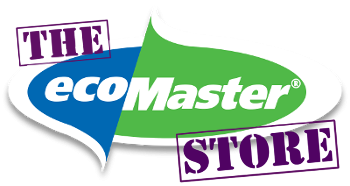Gap Fillers Kit | FAQ
Q: What is the difference between Ultra Clear, Ultraclear and Fulaseal 701 Flexible Ultra Clear?
A: There is no difference - it is the same fabulous product.
Q: What surfaces can I seal with Ultraclear?
A: Ultraclear can be used with fibreglass, glass, metal, plasterboard, concrete, cement sheet, ceramic tiles, brick and timber. Due to its water resistance, Ultraclear can be used to seal gaps and cracks in bathrooms and kitchens. Ultraclear can be used with plastics but test it first. Ultraclear can also be used to seal polycarbonate roofing.
Q: Do I need to buy a caulking gun?
A: Yes you do. There are lots of choices for caulking guns at your local hardware store. Make sure to invest in a caulking gun that allows you to withdraw pressure on the gun when applying the sealant. Some cheaper guns maintain pressure on the tube when you let go of the trigger causing the Ultraclear to spill out of the gun. If you are based in Melbourne, we have a rental service where you can hire top quality trade tools for a week to help you get your jobs done!
Q: I've never tried caulking gaps myself yet. Do you provide guides on how to go about this?
A: We do have instructional VIDEOS to ensure you get a great finish. The videos are also available under the How To tab. All the instructional videos you'll need for a successful DIY caulking job are there.
Q: How do I make a neat finish with Fullers Ultraclear?
A: Use the silicone spreaders included in the kit.
Q: Does Ultraclear shrink once it is installed?
A: Yes - it can shrink a bit if the gaps is very large. Just let it dry completely and reapply a thin layer over the top of the existing sealant.
Q: Is Ultraclear difficult to clean up like silicone?
A: No. One of the reasons we love Ultraclear is that it is a water-based sealant so it's very easily cleaned with water. Just wet a piece of cloth with water, and wipe off the excess sealant from the surface. Whilst it is easy to do, it is important that this is done BEFORE the sealant dries. Once Ultraclear dries it is much harder to remove and it is a mechanical removal.
Q: What if I applied Ultraclear without first cleaning the area of application?
A: You will be sealing the dust and other foreign particles in too. Cleaning the area to be sealed FIRST is a critical step to ensure maximum adhesion. Ultraclear dries to a transparent finish. It will lose that transparency if you can see dust and grime sealed in with it.
If you missed cleaning the surface first before application, and the sealant is not yet cured, you can use a damp cloth to remove it. Once the sealant is cured, you will have to use a knife, scraper, or other mechanical means to remove it.
Q: Can I use this on a metal surface?
A: Yes, of course. Although adhesion to metal is a bit different when compared to timber or cement. This can be improved by light sanding prior to sealant application.
Q: How long will it take for the sealant to cure?
A: Full cure is normally achieved in 5-7 days depending on bead size, weather conditions and substrates. Larger sections of sealant will take longer to cure. Fulaseal 701 Flexible Ultra Clear sealant relies on water evaporation to cure; therefore applying sealant on non porous substrates will extend curing time. During warmer weather, the sealant will cure much faster.
Q: Can I paint over the Ultraclear sealant?
A: Yes, it can be painted with water based paints once tack free (approximately 30 minutes). If you will be using oil based paint, though, please allow 5-7 curing days before painting. If the weather is cold, the curing process may benefit from heating the space to cure the sealant more quickly.
Q: How flexible is the sealant?
A: Offers permanent flexibility with up to 25% joint movement capability.
Q: Will the sealant go mouldy?
A: It is mould resistant, so great for use in bathrooms and kitchens.
